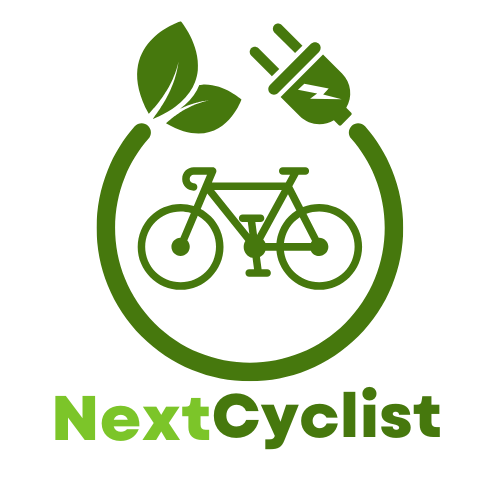The 48V 1000W battery can support speeds of up to 25 mph in electric bikes. This battery provides ample power for efficient travel and quick acceleration. Users experience enhanced performance and range with this setup, making it ideal for daily commutes and recreational rides.
Introduction
Are you excited to unleash the true potential of your e-bike? How fast is the 48V 1000W battery? This question is crucial if you want to maximize your ride’s performance and safety. Understanding how this powerful battery impacts your e-bike’s speed can help you make informed decisions, whether cruising around the neighborhood or tackling tough terrains.
But here’s the kicker—without the right information, you might be left wondering how to achieve that sweet spot between thrill and control. No one wants to feel underwhelmed or, worse, unsafe while riding! In this article, we’ll break down the speed capabilities of the 48V 1000W battery, helping you understand what to expect and how to get the most out of your electric bike experience.
From terrain types to rider weight, we’ll cover everything that impacts speed. By the end, you’ll have a clear picture of how to harness your e-bike’s power for an exhilarating ride. Let’s get started!
TL;DR
- 48V batteries boost e-bike speed due to higher voltage allowing more power flow.
- A 1000W output enhances acceleration and climbing ability, making rides more enjoyable.
- Rider weight critically affects speed; heavier riders may need to minimize excess weight.
- Terrain type impacts speed significantly; uphill rides can slow down performance.
- Tire pressure is essential—check and maintain between 30 to 50 psi to reduce rolling resistance and enhance speed.
- Understanding these factors can help you optimize your e-bike for a smoother, faster ride.
Understanding Battery Voltage And Wattage
When it comes to your ebike, understanding battery voltage and wattage is key to maximizing its performance. A 48V rating indicates the battery’s voltage, which plays a crucial role in how well your ebike performs. Simply put, higher voltage allows for greater electrical energy flow. The more voltage, the faster your bike can go, given that other components are designed to handle that power.
A 1000W output is significant for ebikes. This high wattage means your motor can generate increased power, translating to better speed and torque. More torque means quicker acceleration, which is especially helpful for climbing hills or taking off at traffic lights. It’s critical to understand how voltage and wattage work together in your e-bike, as they fundamentally influence how fast and efficiently you can move.
Here are some helpful points to keep in mind:
- Higher Voltage: 48V batteries typically provide more speed, as they push more power to your motor.
- Increased Torque: 1000W output provides better acceleration, making your ride more enjoyable.
- Compatibility: Ensure your motor and controller are rated for the combined 48V and 1000W for optimal performance.
To visualize how voltage and wattage impact performance, here’s a simple comparison:
| Voltage | Wattage | Effect on Performance |
|---|---|---|
| 36V | 750W | Moderate speed; suitable for city rides |
| 48V | 1000W | High speed; excellent for varied terrains |
| 48V | 1500W | Extreme speed; requires robust components |
Understanding these elements can help you make informed decisions when tweaking your ebike for better performance. For more insights on maintaining your electric bike, check out our guide on e-bike maintenance tips and explore how to measure your battery’s charge time with our e-bike charge time calculator.
Factors Affecting Speed With 48V 1000W Batteries
When considering how fast your ebike can go, various factors come into play. Understanding these elements can help you optimize your ride for better speed and efficiency. Let’s break down the most significant factors affecting speed with 48V 1000W batteries.
Rider Weight Can Significantly Affect How Fast the E-Bike Can Go
Your weight plays a crucial role in determining how fast your ebike performs. A heavier rider will cause the motor to work harder, which can reduce speed. In most cases, if you’re looking to maximize speed, it’s worth considering ways to reduce excess weight—this doesn’t mean you have to take drastic measures, but maybe leave behind unnecessary gear.
Terrain Type Influences Speed; Hills Require More Power and Reduce Overall Speed
The type of terrain you’re riding on can drastically impact your speed. If you take your ebike uphill, you’ll notice a significant drop in speed as the motor struggles for power. For a smoother ride, try sticking to level ground or downhill paths whenever possible. If you live in a hilly area, consider adjusting your route or investing in a more powerful motor for those steep ascents.
Tire Pressure Impacts Rolling Resistance, Which Can Either Increase or Decrease Speed
Lastly, tire pressure matters more than you might think. Under-inflated tires can create more rolling resistance, slowing you down. To optimize your speed, check your tire pressure regularly and inflate them to the manufacturer’s recommended levels.
- Tip: For most ebikes, the ideal tire pressure usually ranges from 30 to 50 psi, depending on the type of tires you have.
By keeping these factors in mind, you can enhance your ebike’s speed and performance, ensuring a smoother and faster ride every time. Happy riding!
To sum it all up, understanding how fast a 48V 1000W battery can propel your ebike is essential for maximizing both speed and safety. We’ve covered how factors like rider weight, terrain, and tire pressure significantly impact your ride. By keeping them in check, you can enjoy a more exhilarating experience on your electric bike.
Now, if you’re eager to get the most out of your ebike adventures, why not jump in? Check out our complete guides for maintenance tips, or subscribe to stay updated with the latest DIY tips and tricks that will keep your ebike running smoothly. Your next ride could be your best yet—don’t wait! Let’s keep your ebiking journey exciting and efficient!

